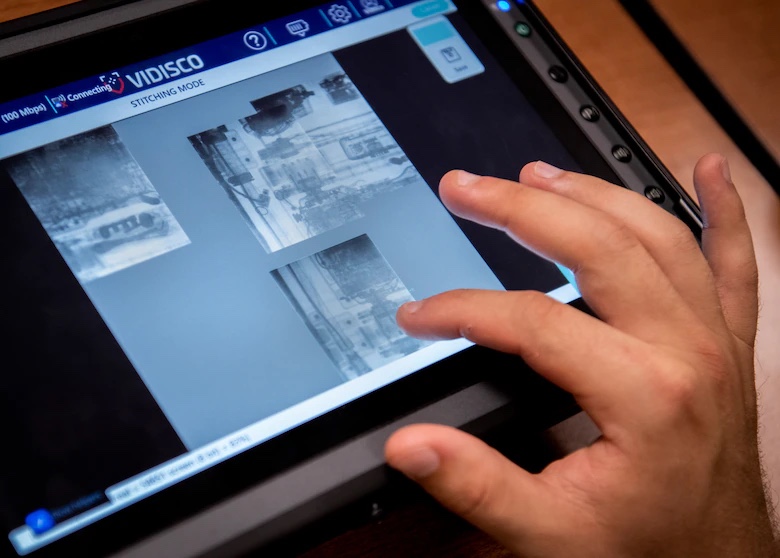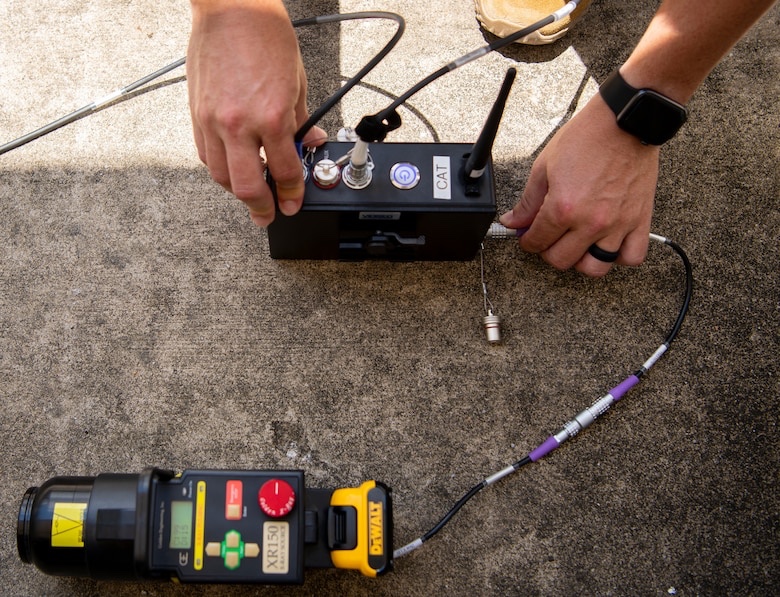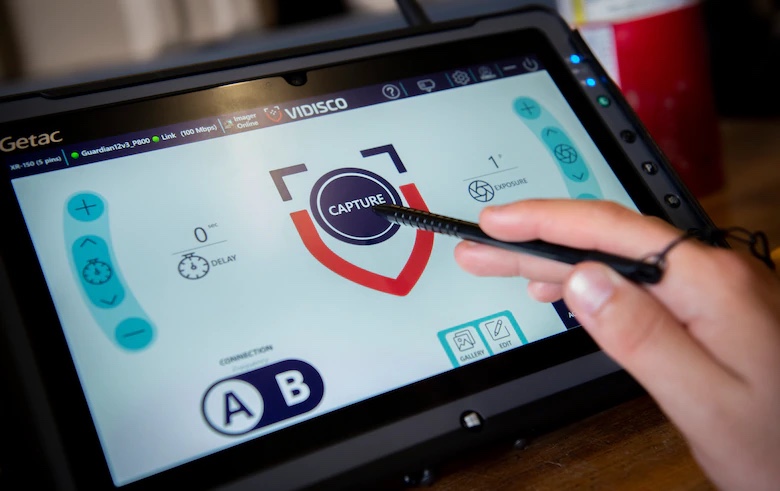EGLIN AIR FORCE BASE, Fla. (AFNS) —
Local explosive ordnance disposal units received and were trained on a new and upgraded portable imaging X-ray system at Eglin Air Force Base July 22.
The Vidisco Guardian 12 Digital Radiographic X-ray system enhances EOD’s capabilities by making it easier to view the internal contents of suspicious, improvised explosive devices and unexploded ordnance.
The Air Force Civil Engineer Center recently delivered the first systems to Hill AFB, Utah and will distribute the remaining systems in conjunction with training events over the next five years. EOD flights from Eglin AFB, Hurlburt Field and Tyndall AFB received the new systems and attended the training.

“The digital X-ray technology will make a world of difference for our EOD forces,” said Tech. Sgt. Quentin Tubbs, 436th Civil Engineer Squadron EOD technician at Dover AFB, Delaware. “It will increase the reliability of capturing clear and concise images and reduce the amount of time we spend next to hazardous devices.”
The Guardian 12 replaces three commercial off-the-shelf systems serving as interim solutions until the new system is fully deployed. This includes a large system weighing over 99 pounds, that primarily serves as base support and requires a wired connection to operate; an X-ray that serves as the wireless mobility system; and a third system that has been obsolete for several years.
“The new system essentially consolidates all the capabilities of previous systems,” said Dave Hodgson, AFCEC EOD logistics lead. “It meets all of the requirements necessary to support the mission.”

Compared to the analog technology of the previous systems, the digital X-ray technology provides a much sharper and clearer image, making it easier to detect explosives such as IEDs or unexploded ordnance, Tubbs said.
Featuring both wired and wireless technology, the new technology combines the capabilities of the off-the-shelf systems currently in use. The wireless capabilities enable remote image capture and can reduce the amount of time Airmen spend going down range, Tubbs said.
“With the older systems, every time we took an image, we had to go downrange and retrieve a panel, bring it back and run it through a machine to verify if the X-ray worked. Many times, we thought a good image was captured only to realize later there was something dense in the way blocking the image.”

The new digital radiographic X-ray system also includes features to improve resiliency. It is lightweight, weighing less than 22 pounds and housed in a compact carrying case for easy mobilization for fly-away missions. The system is also designed to work in extreme temperatures, ranging from minus 14 to 140 degrees Fahrenheit.
Obtaining the new systems was a collaborative effort between AFCEC and the Air Force Installation Contracting Center’s 772nd Enterprise Sourcing Squadron—both part of the Air Force Installation and Mission Support Center enterprise. The $30 million acquisition will put 331 new systems in the hands of EOD Airmen by 2026.
“We’re committed to ensuring our EOD forces have the training, equipment and resources required to accomplish their duties in garrison and downrange,” Hodgson said. “The new systems will allow Airmen to conduct missions safely, rapidly and effectively.”
Story by Emily Mifsud
Photos by Samuel King Jr

